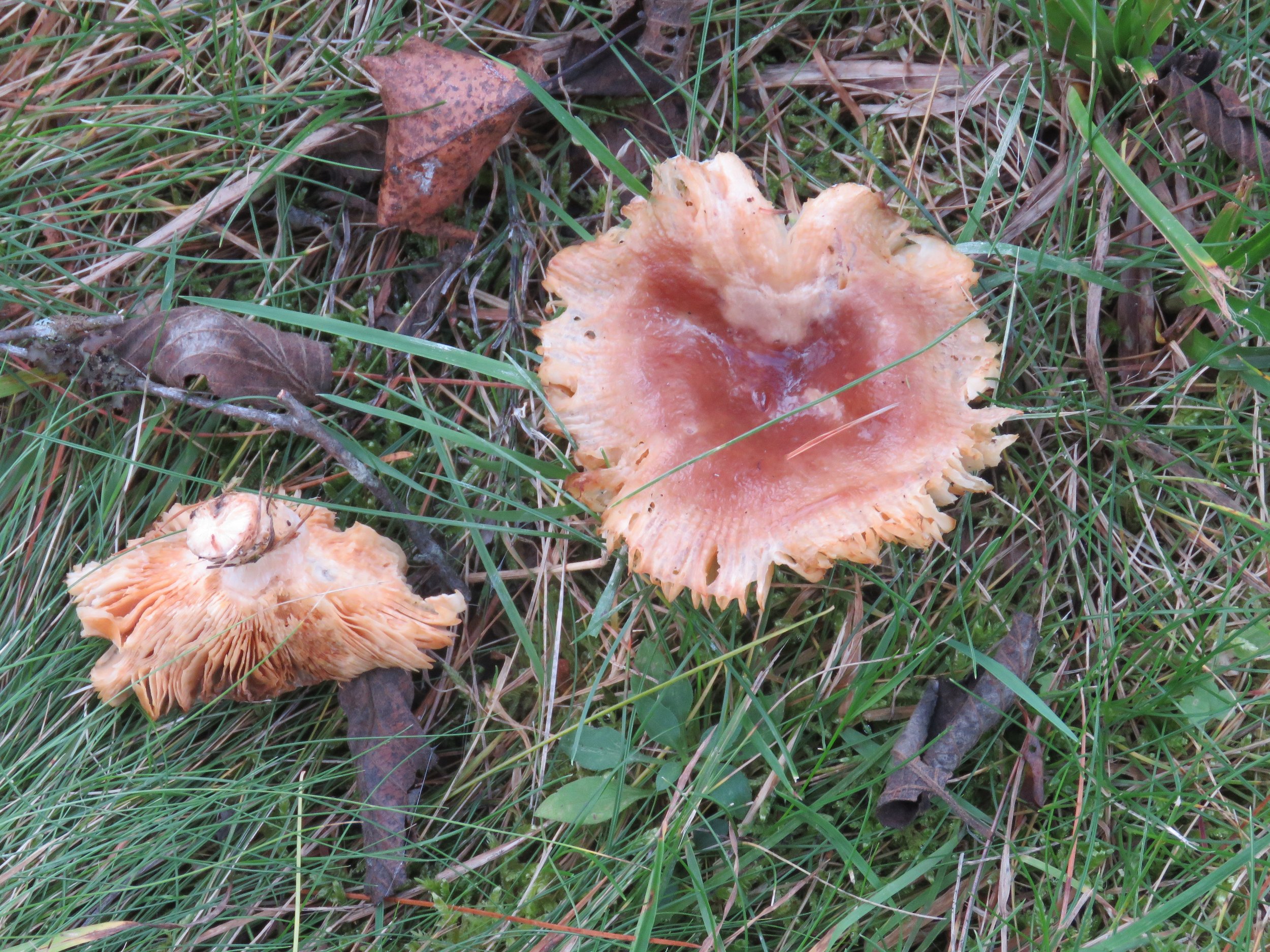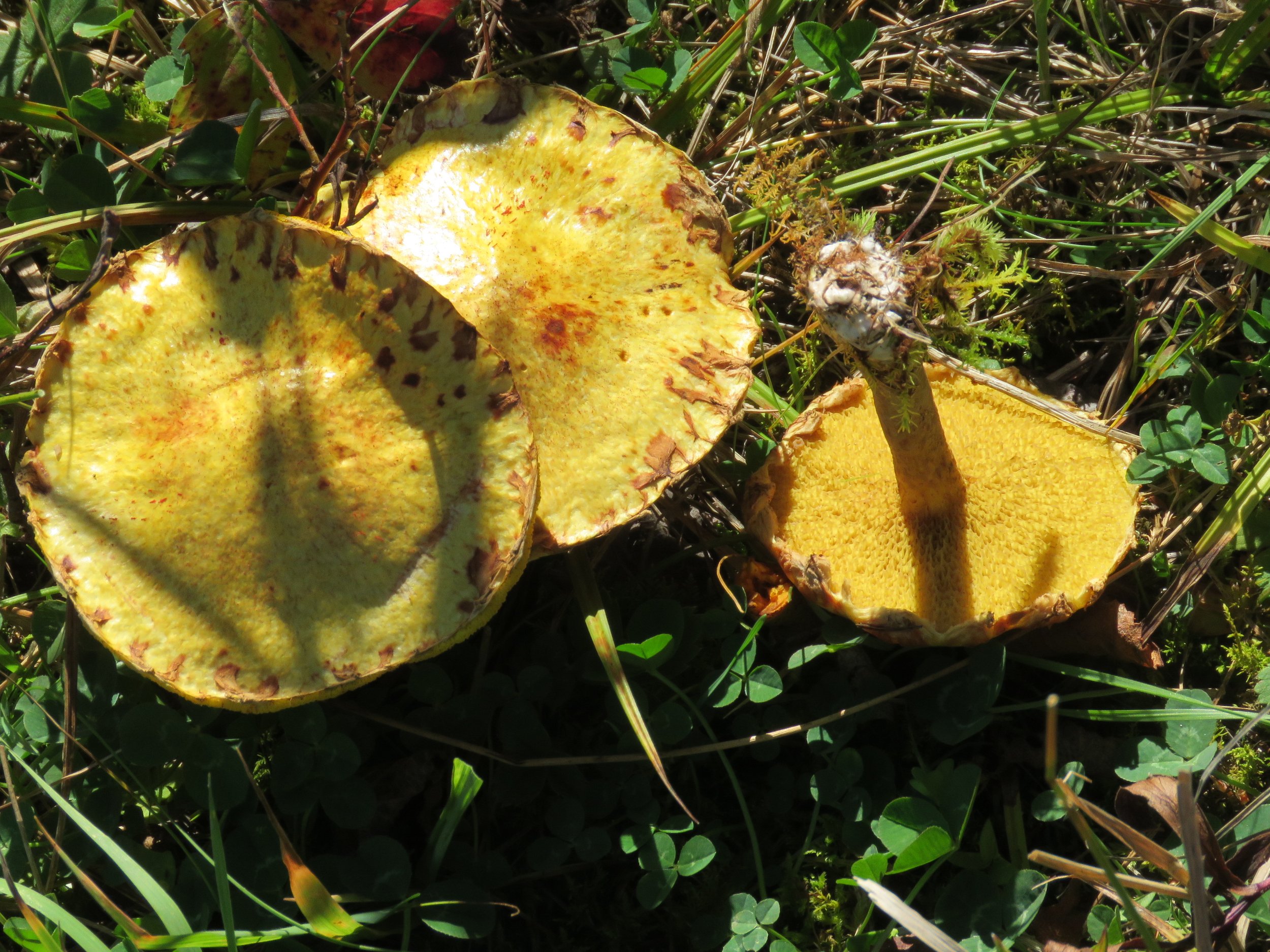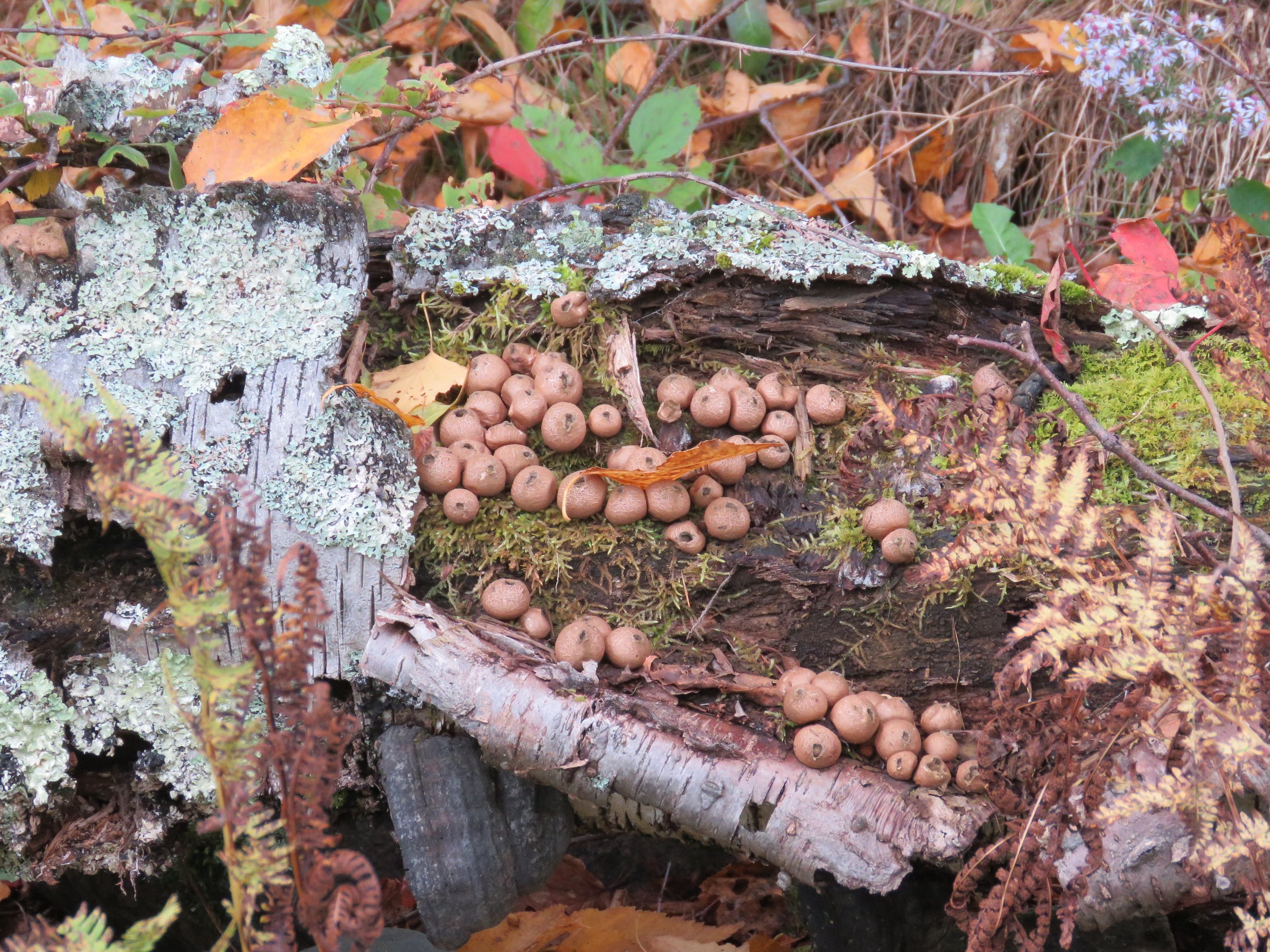Phenological Phacts and Photos w/ Carl Martland / October 2022
Mushroom Crowds
Phenology – “a branch of science concerned with the relationship between climate and periodic biological phenomena (as the migration of birds or the flowering and fruiting of plants).”
The Foggy, Damp Days of Early Autumn
Sometimes the early autumn mists are so thick they not only erase the distant peaks and the nearby hills, they impart an impressionistic fuzziness to what remains. Perhaps a warming sun will burn off the fog to reveal a crisp, cloudless sky by mid-morning, but it’s more likely that we’re in for a day, or two days, or nearly a week of drizzle, constant dripping and unending dampness. Simply perfect weather!
[1] Photos and text by Carl D. Martland, founding member of ACT, long-time resident of Sugar Hill, and author of Sugar Hill Days: What’s Happening in the Fields, Wetlands, and Forests of a Small New Hampshire Town on the Western Edge of the White Mountains. Quotations from his book and his journals indicate the dates of and the situations depicted in the photos.
OK, not perfect weather for you and me, but the best possible weather for mushrooms. Last year, after four days of just such damp and gloomy weather, we happened across an unbelievable number of mushrooms as we enjoyed a walk through the Littleton Dells. We hadn’t ever seen so many there before, and we hadn’t seen anything like that by the Pond or in the Back 4. However, the local mushrooms were just a day behind those in the Dells, for hundreds had popped up by the next morning when I went out for my usual walk around the Pond.
October 1-4, 2021. Many different kinds of mushrooms found by the Point. One was a brownish purple with a white fringe (left). Others, more than five inches in diameter, were a shiny, dark brown. A third variety was smaller, light brown, and growing in a tight clump. Some animal has been nibbling at them.
Mushroom Hunters
Now, I confess that I know next to nothing about mushrooms. I’m not like my student Victor, who foraged for mushrooms with his family back in Poland before he came to this country for grad school. However, those seeking morels in the spring may have no interest in mushrooms beyond their usefulness in the kitchen. Nor am I to be confused with my friend Tony, who actually wrote the book on “Mushrooms of the Eastern Shore of Virginia.” When Tony comes across a clump of unusual mushroom, he treats it like a crime scene – taking photos from all angles of even the smallest beauties before bagging one up for microscopic analysis back at his lab.
October 19, 2014. Tony takes a photo of exquisitely colored mushrooms, so small they could be overlooked by a chipmunk.
My interests are less complicated than Victor’s or Tony’s. I have never trusted myself to forage for mushrooms, nor have I had any interest in (or a lab suitable for) Tony’s forensic analysis. What appeals to me are the photo ops – the surprising variety of sizes, colors, and shapes of mushrooms when they make their sudden appearance in the fall.
October 7, 2016, 70 degrees, clear, beautiful. Many beautiful mushrooms have sprouted at the Point, including a half dozen clumps of various sizes right in front of my chair.
· Golden brown, 3.5 to 6.5 inches in diameter, five in one clump.
· Yellow, 3.5 inch maximum, six in a clump.
· Pinkish/white, 3 inches diameter, two in a clump.
So, the purpose of this photo essay is to encourage you to keep an eye out for interesting mushrooms when you take a walk through the woods on a sunny day in October. Many people like to walk through the woods on such a day, claiming they are only out to view the foliage, but I suspect there are a few who – like me – are really hoping to find many, many clumps of mushrooms.
Mushroom Crowds
Sometimes dozens of small mushrooms are crowded into what must be extremely fertile soil. Don’t expect me to figure out what they are; even Tony refers to them as “LBJs” – Little Brown Jobs.
October 5, 2018. I found a clump of tiny mushrooms and what looks like a mushroom umbrella emerging from one of ACT’s trails in the Cooley-Jericho Forest.
October 5, 2019. I came upon clump of two dozen tiny mushroom on a moss-covered log in Foss Woods.
One day last October, I even found two dozen tiny mushroom that had crowded together in a rotted cavity in a birch tree that had succumbed to age and wind a decade or more ago.
When I decided to work on this photo essay on mushrooms, I knew I had plenty of colorful photos to choose from. I also assumed that I would search through my journals to find a description of the surprise and wonder that I felt when coming across crowds of mushrooms that had pushed up through the forest floor, seemingly overnight.
Unfortunately, I found no such entry. But I was soon rescued by a well-known steamboat pilot’s description of what he found in the Black Forest in Germany. After a diatribe against what he felt were mindless attempts by ants to move their heavy loads, he added this little gem concerning mushrooms:
“The ant is strong, but we saw another strong thing, where we had not suspected the presence of much muscular power before. A toadstool – that vegetable which springs to full growth in a single night – had torn loose and lifted a matted mass of pine needles and dirt of twice its only bulk into the air, and supported it there, like a column supporting a shed. Ten thousand toadstools, with the right purchase, could lift a man, I suppose. But what good would it do?”
Mark Twain, A Tramp Abroad, Volume 1, Chapter XXII
October 19, 2014. A mushroom pushes up a “matted mass of pine needles and dirt”












